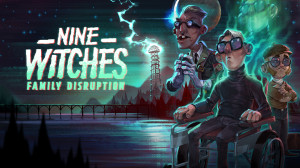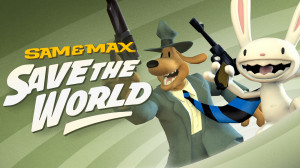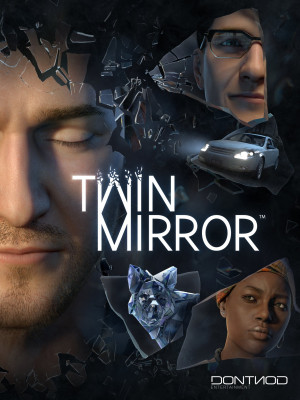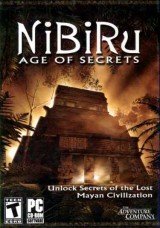Review for unmemory

The art of the text adventure seems to be a thing of the past, at least commercially, the days of words on a blank screen and “Doors are to the Left, North, and South” long since relegated to the distant DOS era. But unmemory is a game that dares to imagine: What would a text adventure look like if it were made today? And the answer is, it'd be like the coolest eBook you've ever read, but with enough visual flair and compelling gameplay to make it legitimately interactive fiction, even without a text parser.
When you begin playing unmemory, it feels more like a book, as you're reading what appears to be some kind of crime drama with the evocative prose of a genre thriller. Sitting in the white space between paragraphs, however, is a photo of a corded telephone with slightly worn buttons and a yellowed-white plastic look, like electronics from the 90s. Beneath the picture is an icon that also looks like a phone. Click it and a recording begins to play. Clearly this mystery novel doesn't just want you to read it. It wants you to live it.
The game's user interface and control scheme are a lot like an interactive PDF. You can scroll or click and drag with your mouse, and certain icons or text selections are interactive. As you read, you’ll stop to view photographs of objects from the prose or click through image galleries of all the items in a room that may require further examination – matchbooks, flyers, statues, lighters, etc. – and the story further unfolds. While reading, you will find certain bits of text in brackets, most commonly just an ellipsis. Clicking one of these will reveal a new block of text as you dive deeper into that chapter.
If the interactive text is a verb, clicking it will cause you to perform the action and move the narrative forward. The prose might tell you that you're holding a shaking gun in your hand and you see the block of text end in “[Shoot].” Select that (there’s no other option but to do so in this largely linear game) and you’ll hear the sound of a gunshot and everything that happens next begins to spill downward in additional blocks of text to read. It feels less like reading this way, and more like remembering. Which is exactly the point.
In unmemory, the reader and game protagonist merge fairly quickly. You soon discover that you have retrograde amnesia (the inability to form new, lasting memories), and these words you're reading represent your struggle to remember the events of the past few … days? Weeks? Years? It's unclear. It plays out like a mash-up of the punky crime characters of a David Lapham comic thrown into the Christopher Nolan film Memento. The story itself is a thriller about sex, drugs, rock & roll, and payback. Apparently you've gotten yourself involved with a band of 1990s riot grrls who commit crimes as a form of artistic expression. You learn that your past self was on a quest of revenge for a murdered lover, and you've utilized extensive tattoos, notes, and Polaroids to set yourself back on your mission whenever your memory resets.
Beginning the game immediately after one of these “resets,” you're trying to piece together what’s happened, and the twists and turns of your life come as much of a shock to you, the character, as they do to you, the player. Wisely, this isn’t all spelled out at the start. Instead the details are gradually peppered in, filling in gaps as you go. The experience benefits from not being given more information up front, as a large part of the concept’s appeal is the main character's spotty memory, begging you to fill it in.
If the story is somewhat derivative, the premise is arguably better served through the medium of a puzzle game than a film, as it gives you a lot of work to do and mystery to uncover. As you scroll through the text the first time, you may notice numbers and fragments of codes in both the pictures and prose. You will also see things like locked briefcases or little mechanisms you can interact with via icons below their pictures. A briefcase, for example, will have three icons below it – one to switch dials, one to rotate the dial you're on, and one to attempt to open the briefcase. Usually you will be missing some of the information needed to solve these sorts of interactive puzzles until you’ve finished reading to the end of the chapter. At that point the screen goes black, and from there you're shown a picture or a video of the room you're in, accompanied by a booming voice. The man sounds like some sort of law enforcement agent walking you through your memories. He'll ask you questions and pull at strings, and he tells you your ultimate goal – to unlock a coded lockbox called a “Debaser” (a reference to the Pixies song of the same name).
Then you're thrown back into the chapter with a bit more information revealed. Now it's time to comb through all you've read and seen again to open the briefcases, work out the codes hidden in photos, play a simple one-button arcade game, or prod a toy with a special computer chip inside – all in order to unravel the clues needed to unlock the Debaser at the end of the chapter so you can continue to plumb your memories and find out what the hell is going on. The way the text is gradually revealed in chunks with small puzzles thrown in along the way maintains a sense of momentum throughout, which is an impressive feat. The plot twists that emerge are exciting, and the game culminates in a heist sequence that feels as tense and fun as any set piece I've played in games with full graphics.
You’re far from the only person in your own story, as each member of the girls’ gang shines in their characterization. Without dialogue options or other player choices, and with very little voice acting (though what’s heard in a few recorded tapes is great), the characters are established almost entirely through the writing and photographs. Fortunately the script is so witty and the character descriptions so vivid that I gained an affinity for all of them as the game went on. There is a moment in unmemory where you must identify each member of the gang and associate them with the color of their balaclavas, and any description of that character going forward is highlighted in that color. It got to the point where I'd see a flash of orange or pink in an upcoming paragraph and get excited for those characters to pop up in the story again.
The game also does an incredible job of building atmosphere with very little. While the visual presentation is decidedly minimalist, the way it’s implemented is excellent. Through the placement of images, the coloring of text, and just the general layout overall, everything looks clean and polished and professional. There is only one song in unmemory and it's diegetic, a Swamp Dogg track that plays at certain points from jukeboxes or car stereos and serves a symbolic purpose in the story. Otherwise the mood is created only through the prose, the occasional sound effect, and the evocative photographs scattered throughout the game. These manage to form a nostalgic picture of the late-90s with clunky cell phones, land lines, MP3 players, and punk rock posters. In between each chapter, a photo collage of sweaty drug- and alcohol-fueled parties and city life flicker across the screen, giving you a true sense of the lifestyles led by the main character. If you let yourself be immersed by it, you can really lose yourself in the setting. I was surprised how much I felt like I was there without any music or graphics to speak of.
Some people will no doubt be tempted to avoid this game, as it's far more similar to reading a book than playing through Myst or Monkey Island, but not only is the story exciting in its own right, its interactive nature is full of smart and creative ideas, sprinkled with clever puzzles if you like a little detective work. And perhaps most intriguingly, the ending isn’t actually the end. I won’t spoil anything, but I would suggest making notes and being prepared to send an email or two if you want to get the full experience. Even with its obvious similarities to Memento, I found unmemory to be a uniquely vibrant text-driven narrative experience, and I'm excited to see more games from Patrones y Escondites in this style in the future.



























